
Majestic Journeys on the Grossglockner High Alpine Road
Discover the breathtaking views and engineering marvels of the Grossglockner High Alpine Road, Austria's most scenic drive through the heart of the Hohe Tauern National Park.
The Grossglockner High Alpine Road is a marvel of engineering and natural beauty. Spanning across the stunning Hohe Tauern National Park, this scenic route offers breathtaking views of Austria's tallest peak, the Grossglockner. As you drive along the winding roads, each turn reveals a new panorama of lush valleys, towering cliffs, and serene alpine meadows. The road itself is an attraction, with its expertly constructed pathways that make you feel at one with the surrounding landscape. Visitors can stop at numerous viewing platforms to soak in the incredible vistas. The Edelweiss-Spitze, the highest viewpoint accessible by car, provides a 360-degree view of more than thirty mountain peaks towering over 3,000 meters. Each season paints a different picture: the road is vibrant with wildflowers in summer, while autumn transforms the scenery into a golden spectacle. In winter, the snow-covered peaks offer a serene and magical experience. While driving, you can explore the various attractions along the route. The Kaiser-Franz-Josefs-Höhe is a must-visit with its visitor center and glacier views. Here, you can learn about the region's geology, wildlife, and the history of the Grossglockner High Alpine Road. For those interested in a more active experience, numerous hiking trails start from the road, leading you deeper into the untouched wilderness. Whether you are a nature lover, a history enthusiast, or simply looking for a picturesque drive, the Grossglockner High Alpine Road promises an unforgettable journey through one of Austria’s most iconic landscapes.
Local tips in Grossglockner High Alpine Road
- Visit in early summer or autumn for the best weather and fewer crowds.
- Stop at the Kaiser-Franz-Josefs-Höhe to learn about the local history and enjoy glacier views.
- Start your journey early in the day to make the most of the scenic stops and hiking opportunities.
- Keep an eye out for wildlife such as marmots and eagles along the route.
- Bring a camera with a good zoom lens to capture the distant peaks and wildlife.
- Dress in layers; the weather can change rapidly in the mountains.
Majestic Journeys on the Grossglockner High Alpine Road
The Grossglockner High Alpine Road is a marvel of engineering and natural beauty. Spanning across the stunning Hohe Tauern National Park, this scenic route offers breathtaking views of Austria's tallest peak, the Grossglockner. As you drive along the winding roads, each turn reveals a new panorama of lush valleys, towering cliffs, and serene alpine meadows. The road itself is an attraction, with its expertly constructed pathways that make you feel at one with the surrounding landscape. Visitors can stop at numerous viewing platforms to soak in the incredible vistas. The Edelweiss-Spitze, the highest viewpoint accessible by car, provides a 360-degree view of more than thirty mountain peaks towering over 3,000 meters. Each season paints a different picture: the road is vibrant with wildflowers in summer, while autumn transforms the scenery into a golden spectacle. In winter, the snow-covered peaks offer a serene and magical experience. While driving, you can explore the various attractions along the route. The Kaiser-Franz-Josefs-Höhe is a must-visit with its visitor center and glacier views. Here, you can learn about the region's geology, wildlife, and the history of the Grossglockner High Alpine Road. For those interested in a more active experience, numerous hiking trails start from the road, leading you deeper into the untouched wilderness. Whether you are a nature lover, a history enthusiast, or simply looking for a picturesque drive, the Grossglockner High Alpine Road promises an unforgettable journey through one of Austria’s most iconic landscapes.
When is the best time to go to Grossglockner High Alpine Road?
Iconic landmarks you can’t miss
Großglockner Hochalpenstraße
Experience the breathtaking beauty of the Austrian Alps along the iconic Großglockner Hochalpenstraße, a must-visit for every traveler seeking adventure.

Gletscherzunge
Explore the majestic Gletscherzunge in Austria, a historical landmark showcasing stunning glaciers and breathtaking alpine views.

Unmissable attractions to see
Nationalpark Hohe Tauern
Discover the breathtaking landscapes and diverse wildlife of Nationalpark Hohe Tauern, Austria's largest national park, where adventure awaits around every corner.

Haus der Steinböcke Heiligenblut
Explore the beauty of nature at Haus der Steinböcke, a gateway to the Hohe Tauern National Park's stunning alpine ecosystem and conservation efforts.

Wasserfall Hirzbach
Discover the captivating beauty of Wasserfall Hirzbach, a stunning waterfall in Fusch, Austria, perfect for nature lovers and adventure seekers.

Geologie-Lehrplatz
Explore the Geologie-Lehrplatz in Seidlwinkl, a captivating tourist destination showcasing stunning geological formations and educational insights into our planet.

Aussichtsplattform
Experience breathtaking panoramic views of Austria's landscapes at the stunning Aussichtsplattform, a must-visit observation deck for every traveler.

Wasserfallwinkelkeessee
Discover the tranquility of Wasserfallwinkelkeessee, a stunning waterfall and lake nestled in the heart of the Austrian Alps, perfect for nature lovers.

Naßfeldspeicher
Experience the natural beauty and tranquility of Naßfeldspeicher, a top tourist attraction in Austria, perfect for adventure and relaxation.

Baumgartlkopf
Discover the stunning vistas and serene trails of Baumgartlkopf, an alpine gem in Fusch, Austria, perfect for outdoor adventures and nature lovers.

Naturschutzgebiet Tauernregion Service Stadion
Discover the serene beauty of the Tauernregion Service Stadion, a breathtaking natural reserve perfect for outdoor adventures and wildlife observation.
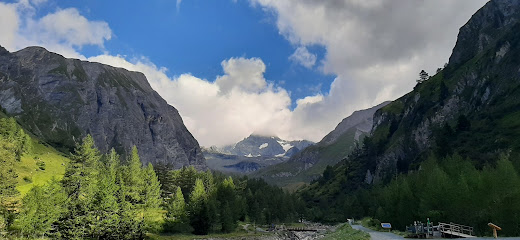
Pasterze
Explore the breathtaking Pasterze Glacier in Austria, a stunning natural wonder perfect for adventure seekers and nature enthusiasts alike.

Stotzbachfall
Explore the enchanting Stotzbachfall in Schwarzsee, a stunning waterfall nestled in the heart of the Austrian Alps, perfect for nature lovers and adventurers alike.

Oberer Glatzsee
Experience the breathtaking beauty of Oberer Glatzsee in Kals am Großglockner, an alpine paradise for nature lovers and adventure seekers.

Pasterzenalpe
Explore the breathtaking beauty of Pasterzenalpe, a premier tourist attraction in the Austrian Alps, where adventure meets tranquility.

Knappenloch Ganotz
Discover the enchanting beauty of Knappenloch Ganotz, Austria's hidden jewel, where nature and tranquility meet.

Krumlbach Wasserfall
Experience the tranquility and beauty of Krumlbach Wasserfall, a stunning waterfall nestled in the heart of the Austrian Alps.
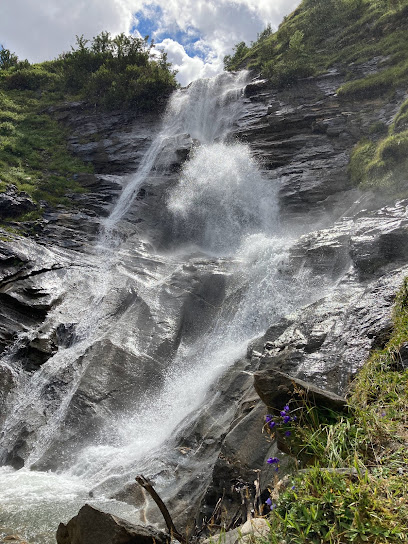
Essential places to dine
Panoramarestaurant Kaiser Franz-Josefs-Höhe und Kaiser Franz-Josef-Haus
Experience exquisite local cuisine against the backdrop of Austria's breathtaking Grossglockner mountain range at Panoramarestaurant Kaiser Franz-Josefs-Höhe.

Restaurant Fuschertörl
Experience authentic Austrian cuisine with breathtaking mountain views at Restaurant Fuschertörl along Grossglockner High Alpine Road.
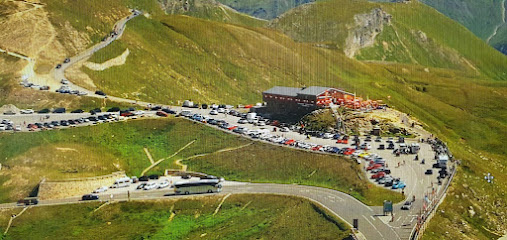
Panorama Restaurant Schareck
Experience authentic Austrian cuisine with stunning mountain views at Panorama Restaurant Schareck in Untertauern.

Spatz'l Alm
Discover authentic Austrian flavors in a cozy alpine setting at Spatz'l Alm in Untertauern.

Markets, malls and hidden boutiques
Großglockner Hochalpenstraße
Explore the breathtaking Großglockner Hochalpenstraße, an iconic alpine route showcasing stunning mountain views and unparalleled natural beauty.

Grossglockner High Alpine Road
Explore the breathtaking Grossglockner High Alpine Road, a stunning mountain pass in Austria offering unforgettable views and nature experiences.

Bründl Sports Flagshipstore
Explore the Alps with the best gear from Bründl Sports Flagshipstore in Kaprun, your ultimate destination for adventure and outdoor activities.

Haus Alpine Naturschau
Explore the enchanting alpine ecosystems at Haus Alpine Naturschau, where nature's beauty and educational exhibits meet in the heart of Austria.

Kiosk Hochtor - Großglockner Hochalpenstraßen AG
Discover the charm of Kiosk Hochtor while enjoying breathtaking views and local delights along the Großglockner High Alpine Road.

Teekorb & Tridor Zell am See specialty coffee roastery coffeeshop regionale Kaffeerösterei Cafe Kaffee tea
Discover Teekorb & Tridor, the ultimate destination for specialty coffee and tea lovers in the heart of Zell am See's stunning alpine scenery.
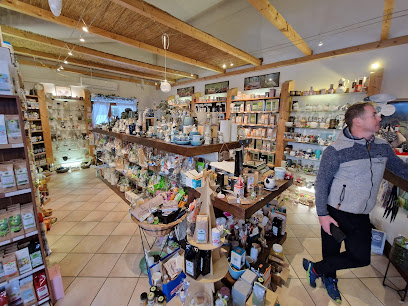
ADEG Maria & Ernst Pichler
Explore local flavors and essentials at ADEG Maria & Ernst Pichler, your go-to supermarket in the heart of Döllach.

ADEG Ernst Pichler
Explore local flavors at ADEG Ernst Pichler, a supermarket in Hof offering fresh produce, local specialties, and a taste of Austrian culture.
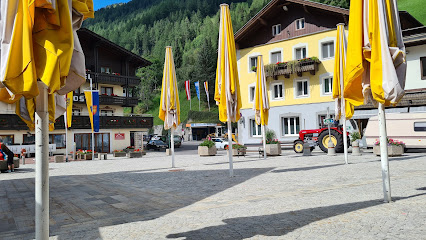
Alpinsport Gratz Gradonna
Discover top-quality outdoor gear and expert advice at Alpinsport Gratz Gradonna, your go-to store for alpine adventures in Kals am Großglockner.

INTERSPORT Grossglockner
Your go-to destination for quality sporting goods, ski rentals, and biking adventures in the breathtaking Heiligenblut am Großglockner.
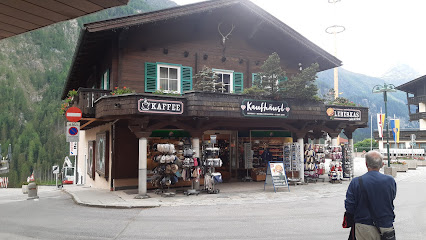
Litzelhofalm
Discover the tranquility of Litzelhofalm, a charming mountain cabin and dairy store in the Austrian Alps, where nature meets authentic local flavors.

FondClothing
Discover unique fashion and accessories at FondClothing in Bruck an der Großglocknerstraße, a must-visit for every style-savvy traveler.

Gschäftl
Explore Gschäftl in Bad Gastein for unique gifts, clothing, and local treasures that capture the spirit of Austria.

The Little Shop of this and that
Explore The Little Shop of This and That for unique gifts, children's clothing, and unforgettable souvenirs in Zell am See, Austria.

Minimarkt
Discover local flavors and essentials at Minimarkt, a charming grocery store in Fusch, near the majestic Großglockner.

Essential bars & hidden hideouts
Restaurant Fuschertörl
Experience the authentic taste of Austria at Restaurant Fuschertörl, where local cuisine meets breathtaking alpine views.

Panorama Restaurant Schareck
Experience exquisite local cuisine and stunning mountain views at Panorama Restaurant Schareck in Untertauern.

Café-Restaurant Dorfstub'm
Explore the flavors of Austria at Café-Restaurant Dorfstub'm, where tradition meets culinary excellence in a cozy atmosphere.

GINHOUSE | Pub | Zell am See
Experience the vibrant nightlife at GINHOUSE, Zell am See's top bar for gin lovers and social butterflies.

Restaurant
Experience authentic Austrian cuisine in a cozy atmosphere in the heart of Untertauern, perfect for food lovers and adventurers alike.

Café Bar Laterndl
Discover the charming Café Bar Laterndl in Hof, Austria, where delightful drinks and a cozy ambiance create unforgettable moments.
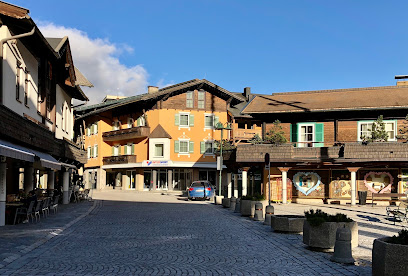
Figolalm auf 1777m
Discover the charm of Figolalm, a mountain bar and restaurant offering traditional Austrian cuisine and stunning views in Kals am Großglockner.

Parasol Apres Sky
Discover the vibrant atmosphere and stunning mountain views at Parasol Apres Sky, Kaprun's premier après-ski bar offering delectable drinks and live entertainment.

Die Mühle Heiligenblut
Discover Die Mühle Heiligenblut, a charming bar in Winkl offering exquisite drinks and stunning mountain views, perfect for a relaxing evening.

Spatz'l Alm
Discover the flavors of Austria at Spatz'l Alm, a cozy restaurant in the heart of Untertauern, perfect for indulging in traditional alpine cuisine.

skyline - CAFÉ | BAR | LOUNGE (2.450 m)
Experience breathtaking views and a vibrant atmosphere at Skyline Café | Bar | Lounge, high in the Kitzsteinhorn mountains.

PanoramA Matrei
Discover PanoramA Matrei, a vibrant bar offering stunning mountain views, delightful drinks, and a lively atmosphere in the heart of Tyrol.

Cafe Bar Beo
Discover the cozy charm of Cafe Bar Beo in Bruck an der Großglocknerstraße, where refreshing drinks meet stunning alpine views.

Kalser Eck
Discover Kalser Eck, a delightful bar in Kals am Großglockner, where local flavors and a welcoming atmosphere await every visitor.

Oldtimer
Experience authentic Austrian cuisine at Oldtimer, a charming gastropub in Rojach, where local flavors meet warm hospitality.
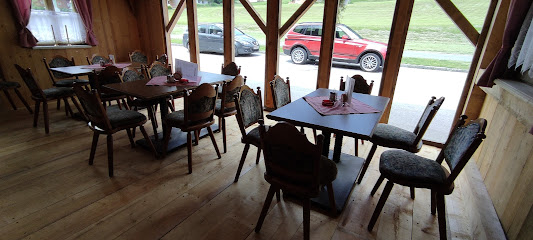
Local Phrases about Grossglockner High Alpine Road
-
- HelloHallo
[ha-loh] - GoodbyeAuf Wiedersehen
[owf vee-der-zay-en] - YesJa
[yah] - NoNein
[nine] - Please/You're welcomeBitte
[bih-teh] - Thank youDanke
[dahn-keh] - Excuse me/SorryEntschuldigung
[ent-shool-dee-gung] - How are you?Wie geht es Ihnen?
[vee gayt es een-en] - Fine. And you?Gut. Und Ihnen?
[goot oont een-en] - Do you speak English?Sprechen Sie Englisch?
[shpre-khen zee eng-leesh] - I don't understandIch verstehe nicht
[ikh fer-shteh-eh nikht]
- HelloHallo
-
- I'd like to see the menu, pleaseIch möchte bitte die Speisekarte sehen
[ikh merkhte bih-teh dee shpigh-kahr-teh zeh-en] - I don't eat meatIch esse kein Fleisch
[ikh es-se kine flysh] - Cheers!Prost!
[prohst] - I would like to pay, pleaseIch möchte bitte bezahlen
[ikh merkhte bih-teh beh-tzah-len]
- I'd like to see the menu, pleaseIch möchte bitte die Speisekarte sehen
-
- Help!Hilfe!
[hil-feh] - Go away!Geh weg!
[gey vehg] - Call the Police!Rufen Sie die Polizei!
[roo-fen zee dee po-lee-tzai] - Call a doctor!Rufen Sie einen Arzt!
[roo-fen zee i-nen ahrts] - I'm lostIch habe mich verirrt
[ikh hah-beh meekh feh-rit] - I'm illIch bin krank
[ikh been krank]
- Help!Hilfe!
-
- I'd like to buy...Ich möchte gerne kaufen...
[ikh merkhte gehr-neh kow-fen] - I'm just lookingIch schaue nur
[ikh shou-eh noor] - How much is it?Wie viel kostet es?
[vee feel kohs-tet es] - That's too expensiveDas ist zu teuer
[dahs ist tso toy-er] - Can you lower the price?Können Sie den Preis senken?
[kuh-nen zee den preys sen-ken]
- I'd like to buy...Ich möchte gerne kaufen...
-
- What time is it?Wie spät ist es?
[vee shpet ist es] - It's one o'clockEs ist ein Uhr
[es ist iyn oor] - Half past (10)Halb elf
[halb elf] - MorningMorgen
[mor-gen] - AfternoonNachmittag
[nahk-mee-tahk] - EveningAbend
[ah-bent] - YesterdayGestern
[gehs-tern] - TodayHeute
[hoy-tuh] - TomorrowMorgen
[mor-gen] - 1Eins
[ayns] - 2Zwei
[tsvay] - 3Drei
[dry] - 4Vier
[feer] - 5Fünf
[foonf] - 6Sechs
[zeks] - 7Sieben
[zee-ben] - 8Acht
[ahkt] - 9Neun
[noyn] - 10Zehn
[tsayn]
- What time is it?Wie spät ist es?
-
- Where's a/the...?Wo ist ein/der...?
[voh ist iyn/der] - What's the address?Was ist die Adresse?
[vahs ist dee ah-dreh-seh] - Can you show me (on the map)?Können Sie mir das zeigen (auf der Karte)?
[kuh-nen zee meer dahs tsee-gen (owf der kar-teh)] - When's the next (bus)?Wann kommt der nächste (Bus)?
[vahn kohmt der nekh-ste (boos)] - A ticket (to ....)Eine Fahrkarte (nach ....)
[iyn-eh fahr-kahr-teh (nahkh ....)]
- Where's a/the...?Wo ist ein/der...?
History of Grossglockner High Alpine Road
-
The Grossglockner High Alpine Road, or Großglockner Hochalpenstraße, was conceived in the late 1920s as a means to boost tourism and provide employment during the Great Depression. Austrian engineer Franz Wallack led the project, envisioning a scenic route that would traverse the Hohe Tauern mountain range and offer unparalleled views of Austria's highest peak, the Grossglockner.
-
Construction began in 1930 and was completed in 1935, involving over 3,000 workers. The project was a monumental engineering feat, requiring the excavation of over 870,000 cubic meters of earth and rock. Despite the harsh alpine conditions, the road was built without the use of heavy machinery, relying instead on human and animal labor. The 48-kilometer route includes 36 hairpin bends and ascends to a height of 2,504 meters at the Hochtor Pass.
-
The road was officially opened on August 3, 1935, with a grand ceremony attended by Austrian dignitaries and international guests. Early tourists were captivated by the panoramic views, diverse flora and fauna, and the opportunity to experience the majesty of the Alps up close. The road quickly became a popular destination for motorists and cyclists alike.
-
During World War II, the Grossglockner High Alpine Road suffered damage due to military activity and neglect. After the war, extensive repairs and improvements were undertaken to restore the road to its former glory. In the 1950s and 1960s, the road was widened and modernized to accommodate increasing traffic and meet safety standards.
-
Today, the Grossglockner High Alpine Road is not only a popular tourist attraction but also a symbol of Austrian resilience and ingenuity. It hosts over 900,000 visitors annually, offering a range of activities including hiking, cycling, and educational exhibits at the visitor center. The road has also inspired numerous works of art, literature, and photography, further cementing its place in Austrian cultural heritage.
-
In recent years, efforts have been made to balance tourism with environmental conservation. Initiatives such as the 'Alpine Nature Show' at the Kaiser-Franz-Josefs-Höhe and the preservation of local wildlife habitats aim to educate visitors about the importance of protecting this unique alpine ecosystem. The Grossglockner High Alpine Road continues to serve as a model for sustainable tourism in high-altitude environments.
Grossglockner High Alpine Road Essentials
-
Grossglockner High Alpine Road is situated in Austria, connecting the states of Salzburg and Carinthia. The nearest major airports are Salzburg Airport (approximately 120 km away) and Innsbruck Airport (about 200 km away). From these airports, you can rent a car or use public transportation to reach the road. The journey by car offers the most flexibility and is highly recommended to fully appreciate the scenic route. Public buses also operate from nearby towns such as Zell am See and Lienz.
-
Driving your own car or renting one is the most convenient way to explore Grossglockner High Alpine Road, allowing you to stop at various viewpoints and attractions along the way. Bicycles and motorcycles are also popular choices for traversing the road. Public transportation includes buses that run seasonally, usually from May to October. Parking areas are available at multiple points, but be prepared for limited space during peak tourist season.
-
The official currency in Austria is the Euro (EUR). Credit and debit cards are widely accepted along the Grossglockner High Alpine Road, especially at larger establishments, gas stations, and tourist attractions. However, it's advisable to carry some cash for smaller purchases or in case you encounter a remote location without card facilities. ATMs are available in major towns like Zell am See and Heiligenblut.
-
Grossglockner High Alpine Road is generally a safe destination for tourists. However, the area can experience sudden weather changes, so always check the forecast and road conditions before setting out. There are no specific high-crime areas targeting tourists, but standard safety precautions such as not leaving valuables in your car and being aware of your surroundings are recommended.
-
In case of emergencies, dial 112 for immediate assistance. The road is well-patrolled by local police and emergency services, especially during the tourist season. Medical facilities are available in nearby towns such as Zell am See and Heiligenblut. It is advisable to carry a first aid kit and have travel insurance that covers medical emergencies. For vehicle breakdowns, there are service stations along the route where help can be sought.
-
Fashion: Do dress in layers and wear sturdy footwear, as weather can change rapidly. Avoid wearing high heels or flip-flops. Religion: Do respect local customs and traditions, particularly when visiting religious sites like chapels along the route. Public Transport: Do use designated parking areas and be mindful of other tourists. Don't block access roads or viewpoints. Greetings: Do greet people with a friendly 'Grüß Gott' or 'Hallo'. A smile and eye contact go a long way. Eating & Drinking: Do try local Austrian delicacies at mountain huts and restaurants. Don't litter; always use designated trash bins.
-
To experience Grossglockner High Alpine Road like a local, consider stopping at lesser-known viewpoints and hiking trails. Visit early in the morning or late in the afternoon to avoid the crowds and enjoy the tranquility. Engage with local guides and rangers who can provide insights into the flora, fauna, and history of the area. Don't miss the Kaiser-Franz-Josefs-Höhe visitor center for panoramic views and educational exhibits.
Nearby Cities to Grossglockner High Alpine Road
-
Things To Do in Zell am See
-
Things To Do in Kitzbühel
-
Things To Do in Hallstatt
-
Things To Do in Salzburg
-
Things To Do in Kranjska Gora
-
Things To Do in Innsbruck
-
Things To Do in Klagenfurt
-
Things To Do in Bohinj
-
Things To Do in Bled
-
Things To Do in Nova Gorica
-
Things To Do in Munich
-
Things To Do in Škofja Loka
-
Things To Do in Kamnik
-
Things To Do in Ljubljana
-
Things To Do in Sežana











